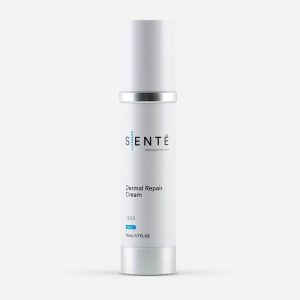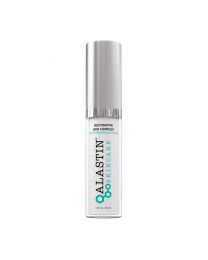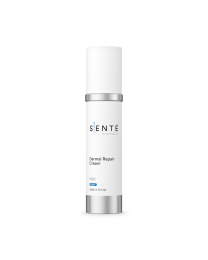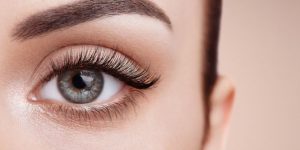Free Shipping Over $100
Free Samples With Every Purchase
Auto Replenishment Available
Authorized Reseller
Damaged Skin Barrier: Repair & Prevention

Skin is the body’s largest organ. Just like the heart or kidneys, skin has a job to do to keep our body functioning at the highest level. The external layer of skin, the stratum corneum, creates a barrier between the body and external allergens, irritants, and damaging environmental factors like weather and sunlight. When this protective barrier is damaged, the skin and the whole body are susceptible to inflammation, irritation, allergic response, chronic skin conditions, skin cancers, and other skin health concerns. To minimize the risk of skin issues, it’s important to prevent and repair damage to the skin barrier. In this blog, we discuss exactly what the skin barrier is, how to tell if it’s damaged, what causes damage, steps to prevent and repair skin damage, and our top recommended products to prevent and repair your skin barrier.
What Is the Skin Barrier Made Of?
Many people think the epidermis is the outermost layer of the skin, but there should actually be two additional protective barrier layers between the epidermis and the environment. First, there is a thin layer of sebum. This is the body’s natural oil. Just below the sebum barrier is the stratum corneum. This is really the first layer of skin. Within the stratum corneum, there are corneocytes (skin cells). These skin cells are held together by lipids, including fatty acids, cholesterol, and ceramides. When the sebum barrier and stratum corneum are healthy, they protect the epidermis from damage and prevent water loss. When these layers are damaged, the epidermis and internal systems are exposed to potentially damaging environmental factors.
How Can You Tell if Your Skin Barrier Is Damaged?
A healthy skin barrier has a smooth, solid layer of sebum oil on the surface, but it doesn’t appear oily or greasy. Within the outermost layer of skin, lipids hold the skin cells together, creating a brick-and-mortar-like solid layer of skin. From the outside, the skin should look smooth and hydrated. Texture and tone should be even. The skin should be neither too dry nor too oily. There should be good elasticity, so when the skin moves, it bounces back quickly.
When the skin barrier is damaged, the sebum layer doesn’t completely cover the skin, so there are patches where the skin is dry. There may also be areas of the skin that are oily. Rather than being a solid brick wall of skin cells held together by lipid mortar, the stratum corneum is unevenly or irregularly organized. Because this barrier layer isn’t solid, there are gaps that allow in outside allergens or irritants. This leads to common signs of damaged skin barrier like skin that is irritated, dry, red, inflamed, flaky, thickened, oily, or otherwise has a noticeably uneven skin tone or texture.
What Causes Damage to the Skin Barrier?
To adequately repair a damaged skin barrier and prevent damage in the first place, it’s essential to pinpoint the underlying cause of the skin’s barrier damage. By discovering and avoiding the causes of skin barrier damage, you’ll take the first step toward repairing current skin damage and preventing damage in the future. Some of the most common causes of skin barrier damage include:
Skincare Routine Mistakes
Using harsh exfoliants, exfoliating too frequently, incorporating too many acids into the skincare routine, or washing skin too often are all common mistakes that contribute significantly to barrier damage. These mistakes all remove the sebum oil layer and damage or break down the lipid layers that hold skin cells together in the stratum corneum. Exfoliants, acids, and other harsh skincare products are designed to remove dead skin cells when used properly. However, overuse of these products not only strips away the dead skin cells but also damages the protective skin barrier below.
Environment
The weather, pollution, UVA and UVB ray exposure, chemicals, allergens, and other aspects of the environment we live in can all be contributors that damage your skin barrier. It’s important to understand the way your environment impacts your skin and take steps to prevent unnecessary changes in skin health. For instance, wear sunscreen every day to avoid damage from UVA and UVB rays. Another way to prevent environmental damage is to be aware of how weather impacts your skin. Dry fall and winter weather may require the use of a more hydrating moisturizer.
Aging
As we get older, our skin becomes thinner and weaker. This is due to slower skin cell turnover and decreased production of collagen and elastin. For these reasons, it’s significantly easier for the skin’s barrier to be damaged as we age.
Genetics & Chronic Skin Conditions
Some people inherit naturally thinner or more sensitive skin through genetics. Others experience these issues due to chronic skin conditions like eczema, psoriasis, rosacea, and acne that can damage the skin’s barrier or make it more challenging to maintain a healthy skin barrier.
Lifestyle
Stress, poor diet, dehydration, lack of sleep, insufficient exercise, excessive alcohol usage, smoking, and other lifestyle factors also impact skin health. The body is built to use nutrients and energy stores where they are most needed. When we lack adequate nutrients or energy, our body reserves the best nutrients for the life-giving organs, leaving the skin with whatever’s left over, so by maintaining good overall health, you can also achieve a healthy skin barrier.
Can the Skin Barrier Damage Be Prevented or Repaired?
The easiest way to prevent barrier damage is to learn the causes of this damage and avoid or counteract them. For instance, if dehydration is causing a lack of moisture in the skin, make sure to drink more water. If sun exposure is the underlying cause of skin barrier damage, reduce time in the sun or change to a stronger sunscreen. Another way you can prevent barrier damage is by working with a dermatologist to develop an effective skincare routine that keeps skin healthy and manages any chronic skin conditions. You should also review all skincare products, cosmetics, and household products that come in contact with your skin. These items may cause irritation or damage the skin’s barrier. There are many ways to repair the skin’s barrier once damage occurs, including:
- Switch to cooler water when cleansing as hot water can strip your skin of its natural moisture barrier.
- Spend less time in the shower or bath and moisturize directly after bathing.
- Apply sunscreen every day to all areas of the body that will be exposed to sunlight.
- Combine traditional emollient moisturizing lotions with humectants, like hyaluronic acid, that attract moisture and occlusives that act as a temporary barrier cream to prevent water loss as the skin’s natural barrier heals.
- Stop exfoliating or decrease the frequency of exfoliation.
Most Recommended Products to Repair Skin’s Barrier
Each person’s skincare needs will differ. A good rule of thumb is to look for skincare products that contain skin barrier-repairing active ingredients. This includes ceramides, hyaluronic acid, niacinamide, aloe, fatty acids, and glycerin. If you’re not sure where to start, consider some of our most-recommended skincare products to repair a damaged skin barrier.
Colorescience All Calm Multi-Correction Serum
 When the skin’s barrier is damaged, discomfort is one of the first concerns. Skin with a damaged protective barrier often feels irritated or inflamed. The Colorescience All Calm Multi-Correction Serum immediately soothes skin upon application. In addition to calming irritated skin, this product deeply hydrates to repair the skin’s natural barrier and deliver smoother skin texture.
When the skin’s barrier is damaged, discomfort is one of the first concerns. Skin with a damaged protective barrier often feels irritated or inflamed. The Colorescience All Calm Multi-Correction Serum immediately soothes skin upon application. In addition to calming irritated skin, this product deeply hydrates to repair the skin’s natural barrier and deliver smoother skin texture.
SkinCeuticals Silymarin CF
 For those who have skin barrier damage caused by acne, they may notice a lot of redness and pain, especially during breakouts. SkinCeuticals Silymarin CF is an oil-free serum that is non-comedogenic and safe for use on acne-prone skin. It combines l-ascorbic, ferulic, and salicylic acid with vitamin C and milk thistle (silymarin). The acidic ingredients, like other common acne treatments, reduce oiliness to clear up breakouts and cleanse pores. Vitamin C protects against sun and environmental damage. Silymarin soothes redness, itching, and inflammation.
For those who have skin barrier damage caused by acne, they may notice a lot of redness and pain, especially during breakouts. SkinCeuticals Silymarin CF is an oil-free serum that is non-comedogenic and safe for use on acne-prone skin. It combines l-ascorbic, ferulic, and salicylic acid with vitamin C and milk thistle (silymarin). The acidic ingredients, like other common acne treatments, reduce oiliness to clear up breakouts and cleanse pores. Vitamin C protects against sun and environmental damage. Silymarin soothes redness, itching, and inflammation.
ALASTIN Skincare Restorative Skin Complex with TriHex Technology
The ALASTIN Skincare line of products was developed to be used before, during, and after dermatologic procedures to promote healing and reduce the risk of scarring. With regular use, these products promote general skin health, heal the skin barrier, and improve the appearance of the skin. Their flagship product, ALASTIN Skincare Restorative Skin Complex with TriHex Technology, is ideal for repairing a damaged skin barrier. It is designed to promote the production of collagen and elastin, heal the skin more quickly, and protect against future damage.
Sente Dermal Repair Cream
 If you have aging or sun-damaged skin, Sente Dermal Repair Cream should be your go-to product to restore the skin’s protective barrier. It utilizes innovative heparan sulfate analog (HSA) technology to improve your skin’s health and hydration. Like hyaluronic acid and other humectant moisturizing ingredients, HSA is a water-binding molecule that helps the skin maintain hydration. Additionally, HSA helps to regulate the skin’s immune response to inflammation, allowing the skin to heal more readily with less irritation.
If you have aging or sun-damaged skin, Sente Dermal Repair Cream should be your go-to product to restore the skin’s protective barrier. It utilizes innovative heparan sulfate analog (HSA) technology to improve your skin’s health and hydration. Like hyaluronic acid and other humectant moisturizing ingredients, HSA is a water-binding molecule that helps the skin maintain hydration. Additionally, HSA helps to regulate the skin’s immune response to inflammation, allowing the skin to heal more readily with less irritation.
EltaMD Recovery Serum
 The entire EltaMD Recovery System is beneficial to repair a damaged skin barrier, but the EltaMD Recovery Serum may be the most important step. This highly concentrated serum quickly soothes and heals skin, and it delivers a softer, smoother skin texture. Long-term, this product improves overall skin tone and complexion and prevents further skin barrier damage.
The entire EltaMD Recovery System is beneficial to repair a damaged skin barrier, but the EltaMD Recovery Serum may be the most important step. This highly concentrated serum quickly soothes and heals skin, and it delivers a softer, smoother skin texture. Long-term, this product improves overall skin tone and complexion and prevents further skin barrier damage.
ALASTIN Skincare Regenerating Skin Nectar with TriHex Technology
 ALASTIN Skincare Regenerating Skin Nectar with TriHex Technology is another excellent skin barrier-restoring product from the ALASTIN Skincare line. The unique formula of this product was developed to improve the skin’s natural healing ability. It calms inflammation and irritation and boosts the health and appearance of the skin.
ALASTIN Skincare Regenerating Skin Nectar with TriHex Technology is another excellent skin barrier-restoring product from the ALASTIN Skincare line. The unique formula of this product was developed to improve the skin’s natural healing ability. It calms inflammation and irritation and boosts the health and appearance of the skin.
SkinCeuticals Triple Lipid Restore 2:4:2
 One of the main underlying causes of a damaged skin barrier is the loss of healthy lipids to maintain a strong, smooth layer of skin in the stratum corneum. SkinCeuticals Triple Lipid Restore 2:4:2 helps to restore the lost lipids to strengthen this barrier. This product is named for its ingredient formulation. It contains 2% pure ceramides, 4% natural cholesterol, and 2% fatty acids. It immediately works to repair the skin’s barrier and supports the skin’s natural healing processes for the long term.
One of the main underlying causes of a damaged skin barrier is the loss of healthy lipids to maintain a strong, smooth layer of skin in the stratum corneum. SkinCeuticals Triple Lipid Restore 2:4:2 helps to restore the lost lipids to strengthen this barrier. This product is named for its ingredient formulation. It contains 2% pure ceramides, 4% natural cholesterol, and 2% fatty acids. It immediately works to repair the skin’s barrier and supports the skin’s natural healing processes for the long term.
Keep Learning About Skincare Basics & Beyond
If you’re interested in learning more about skincare routines, great products, how to manage chronic skin conditions or other skin health issues, we hope you’ll keep exploring the DermSkincare site. Come back regularly to learn more in our skincare blog.














